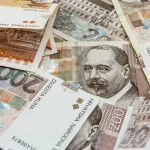As Marina Klepo/Novac writes on the 14th of January, 2020, in the second half of this year, with parliamentary elections expected, the Croatian Government hopes to receive a call from the competent European institutions that Croatia can enter the European Exchange Rate Mechanism (ERM2), a so-called ”waiting room” in which each EU member state must spend at least two years before Eurozone entry and the adoption of the euro as an official currency.
If Croatia implements all of the measures it has committed itself to, at least according to the European Commission Vice-President for the Euro and Social Dialogue, Valdis Dombrovskis, Croatia could achieve this goal “as early as the second half of 2020”.
Along with the letter of intent, in July last year, the Croatian Government also sent a detailed follow-up action plan of nineteen measures and activities it intends to implement in order to enter ERM2, and thus be granted Eurozone entry eventually. It seems that the passage of time in fulfilling these obligations is quite solid.
According to Zvonimir Savic, coordinator of activities related to Croatia’s Eurozone entry, the pace of implementation of the listed measures is “quite good”. Of the nineteen measures that involved nine institutions, just over four have been fully implemented so far. The implementation of twelve of them is underway, ie, they’re all at some stage of implementation.
”Given that several of them are related to the passing of legislation in Parliament, it takes a little more time. But if all goes to plan we expect that all measures will be fulfilled in April, and in May at the latest,” says Savic. He explains that Croatia is expected to inform the European Commission when it fulfills all nineteen measures.
It has been agreed with institutions such as the European Commission (EC), Eurostat and the European Central Bank (ECB) that what the government proposes in the action plan must absolutely be fulfilled for the country’s future Eurozone entry. Although these promises don’t really seem particularly demanding, because many measures, such as the law on the rights of officials, were already on the agenda, Savic added that some of them were quite complex. In any case, their timely implementation is of paramount importance for the government at this point.
When it has completed its ”homework”, the government will inform the Eurogroup, the representatives of all existing Eurozone member states, and thereby request participation in the exchange rate mechanism. However, the decision is up to them, and they will consider Croatia’s application and decide when Croatia can enter ERM2.
”It’s realistic to expect a response from the Eurogroup in the second half of next year. They need to confirm that we’ve fulfilled the measures and that, for example, from January the 1st, 2021, Croatia enters ERM2,” Savic notes.
Finance Minister Zdravko Maric also stresses that he expects that all measures included in the action plan will be fulfilled on time, and the Croatian National Bank’s Governor Boris Vujcic is also satisfied with the way things are going so far when it comes to preparations and fulfilling obligations for this step of Eurozone entry approval.
The action plan consists of six areas: bank rehabilitation, the macroprudential framework, anti-money laundering, statistics, public sector management, and Croatia’s business environment. In the past month, many of the laws that need to be passed have come under public scrutiny. Among these are the Law on Official Statistics, the Law on Credit Institutions, the Law on the Recovery of Credit Institutions, the Law on the Croatian National Bank (CNB/HNB), the Law on Confirmation of Agreements and the Unification of Contributions to the Single Resolution Fund, and so on.
Among other things, these legal changes imply that the CNB, for example, will have additional macro-prudential measures and, where necessary, be able to prescribe them to preserve the stability of the financial system.
The amendments to the law on credit institutions also regulate the exchange of information on the creditworthiness of retail clients. The Croatian Registry of Credit Obligations (HROK), established by banks fifteen years ago, ceased to operate in mid-2018 due to the application of a general data protection (GDPR) regulation in the European Union. In line with the new legal provisions, it is now expected that the exchange of data will start again in the middle of this year.
Additionally, the NRS benchmark interest rate, which serves as an index for determining the variable portion of interest rate on consumer loans, will be calculated and published by the CNB in the future, and not by the Croatian Banking Association.
Much like the Ministry of Finance and the CNB, who have been very up-to-date on the work of preparing for Croatia’s eventual Eurozone entry, the Ministry of Economy, for example, has introduced an electronic start-up business, and by March it must present a plan to reduce the massive, draconian administrative burdens placed on businesses in Croatia. The government should then adopt it.
Greater activity is also expected from the Ministry of State Property, which by April must define possible fluctuations and announce tenders for the sale of state shares in at least 90 companies. One tender has now been announced and regards the sale of stakes in as many as thirty companies.
If Croatia joins ERM2 early next year, the national currency will be pegged to the euro, a mid-exchange rate will be established and the Maastricht criteria will all be met.
Member states’ experiences and length of stay within the ERM2 mechanism have tended to all be very different, ranging from 2.5 years (Slovenia) to over ten years (Lithuania), indicating that joining the ERM2 does not have to lead to the introduction of the euro in the short term. Only the United Kingdom has an opt-out from Eurozone entry.
Make sure to follow our dedicated politics and lifestyle pages for much more.









